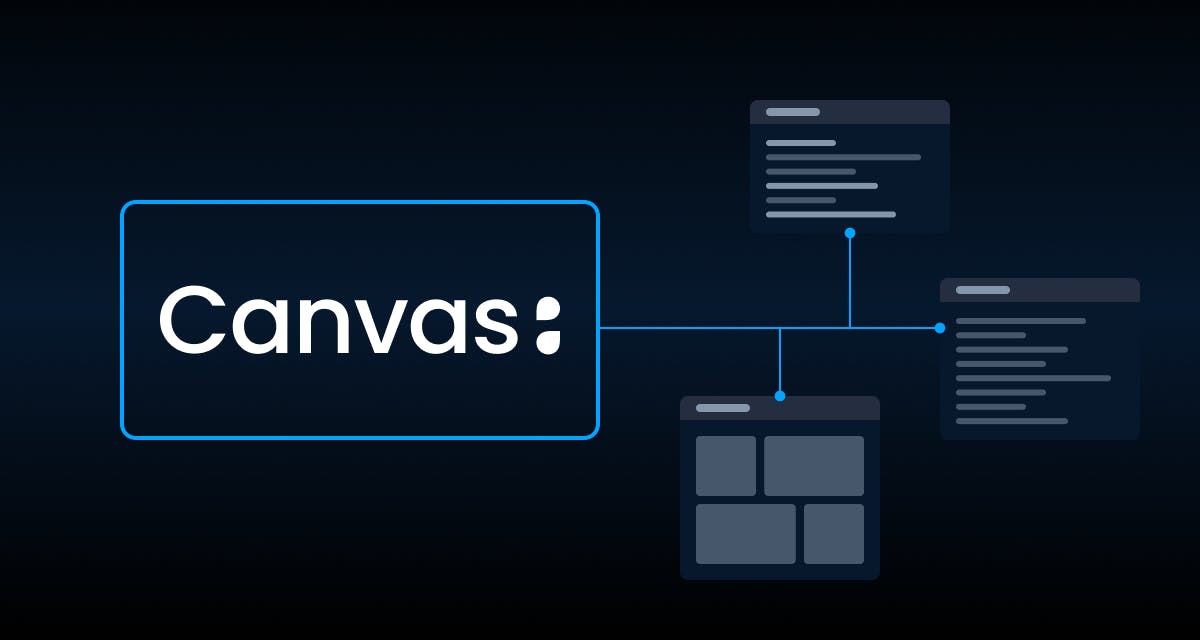The patient intake process remains one of healthcare's most persistent operational bottlenecks. Despite decades of digitization efforts in healthcare information, we continue to experience paper forms and clipboards in the waiting room nearly every time we visit a new practice. When practices rely on paper forms, manual data entry and disconnected systems create friction for both patients and staff. The result is a huge drag on the efficiency of a practice and on the patient experience - delayed appointments, incomplete information, and frustration at the work we must do as a patient to access care.
The shift from paper to digital intake is table stakes. The opportunity in front of us now is to leverage generative AI systems to create a streamlined, personal, and dynamic intake process. That will create better structured informatics and downstream integration into clinical workflows to create better, timely, patient-centered care.
We can do more than just digitize forms. We can validate insurance in real-time, trigger downstream tasks, gather important patient-reported outcomes, and update comprehensive medical history. We can ensure all of this is available to the clinician before and during the patient interaction within the EMR.
This will mean staff spend less time on data entry and more time on care coordination. Patients complete forms on their own schedule, arrive prepared, and experience shorter wait times. The practice wins twice - a more efficient clinical operation and a better patient experience.
Understanding the Patient Intake Process
Patient intake captures the information required to deliver care: demographics, medical history, insurance, and consent forms. In traditional workflows, this means paper forms, manual transcription, and data that's often incomplete or outdated by the time it reaches the provider.
Automated intake replaces this with a connected digital workflow. Forms or chat-based interfaces adapt to patient responses, insurance verification happens in real-time, and data flows directly into the EMR without human intervention. The difference isn't just speed—it's accuracy and completeness. Digital systems enforce validation rules, flag missing information, and ensure providers have what they need before the appointment begins.
For practices managing volume, this becomes operational leverage. A well-designed intake workflow can serve multiple specialties, locations, and care models—all while maintaining consistency and reducing errors.
Digital Patient Intake vs Paper Forms
Paper forms are static, error-prone, and require manual transcription. Digital forms are dynamic and integrated. Paper forms increase administrative burden and data inaccuracies while digital intake creates stronger structured data and streamlines workflows on all sides.
Digital intake can enable:
- Conditional logic that shows relevant questions based on patient responses
- Real-time insurance verification that catches eligibility issues before the appointment
- Automatic EMR updates that eliminate duplicate data entry
- Audit trails that track every change and maintain compliance
These benefits mean fewer phone calls or follow ups to chase missing information. For patients, it means less time to compete or repeat form submissions. For providers, it means starting appointments with complete, accurate data.
How Intake Automation Software Works
Modern intake automation meets patients where they are, with their preferred mode of communication. Patients receive appointment reminders via email or text with a secure link to digital forms or a chat-based intake interface or agent. These systems are now capable of adapting based on patient responses using conditional or agentic automation.
For example, if a patient indicates they're managing diabetes, the system can ask about glucose monitoring, medications, and recent lab results. This ensures practices collect complete information without overwhelming patients with irrelevant questions.
Once intake is received, in a modern system those informatics become structured data mapped to the ontology of the EMR system. Forms or responses map directly to specific fields in the patient record.
This creates a single source of truth. No duplicate entries. No reconciliation between systems. Just clean data flowing into the right place at the right time.
Collecting Patient Information and Insurance Details
Effective intake guides patients through a structured sequential workflow:
- Demographics and contact information
- Insurance details with real-time verification
- Medical history, current medications, and allergies
- Reason for visit and current symptoms.
For returning patients, forms pre-populate with existing information, requiring updates only where something has changed. This dramatically reduces friction and improves accuracy as patients are confirming information rather than re-entering it from memory.
Managing Intake and Consent Forms
Consent management is often an afterthought in intake design, but it's critical for compliance and risk management. Modern systems centralize all documentation in a secure, auditable location including procedure-specific consent forms, HIPAA privacy notices, treatment authorizations, and financial responsibility agreements.
Electronic signatures can be stored with the patient record. Modern systems track version updates, flag patients who need to re-sign after policy changes, and support multiple languages for accessibility.
This turns consent from a compliance burden into a streamlined patient experience. No chasing down signatures. No filing papers in multiple locations. Automated workflows that ensure documentation is complete before care begins.
Benefits for Patients and Staff
The value of intake automation becomes clear when you measure its impact on operations and patient experience.
- Shorter Waiting Room Times and Faster Check-In: Completing intake before arrival compresses check-in and patients move directly to care. This has downstream effects on scheduling as shorter check-in times mean tighter appointment intervals without creating waiting room congestion. Practices can see more patients without expanding physical space or adding staff.
- Better Patient Experience and Satisfaction: Digital intake creates a modern, patient-centered experience. Patients complete forms at home, on their own schedule, without the pressure of a waiting room. Forms are branded, mobile-friendly, and designed to guide patients through complex questions. Auto-save functionality means patients can complete forms across multiple sessions. Progress indicators show how much remains. Clear instructions reduce confusion and phone calls to the practice. The result is patients who arrive prepared, providers who have complete information, and conversations focused on care rather than paperwork. Research consistently shows that patients prefer electronic intake for both convenience and accuracy.
- Improved Data Accuracy and Secure Records: Manual transcription introduces errors. Field validation catches them. Digital intake enforces data quality at the point of entry—before it reaches the EMR. Common validations include: required fields that must be completed, format checking for emails, phone numbers, and dates, medication and allergy lists from standardized databases, and insurance verification against payer systems. Security is built into the foundation. Patient data is encrypted in transit and at rest. Access is logged and auditable. HIPAA compliance is maintained through role-based permissions and automatic audit trails. Unlike paper forms that can be misplaced or exposed, digital records are tracked from submission through archival. Patients gain confidence that their information is protected. Practices gain assurance that they're meeting regulatory requirements.
The Importance of System Integration
The difference between a digital form and an integrated intake system is whether data flows automatically into operational workflows.
True integration means intake data updates multiple systems simultaneously: patient records in the EHR, scheduling and appointment details, billing and insurance verification, and task queues for staff follow-up.
When a patient changes insurance in the intake form, it updates billing immediately. When a provider documents a new allergy during a visit, it appears in the intake system for the next appointment.Smart systems go further, triggering automated workflows based on intake responses. Urgent symptoms can create tasks for triage nurses. Missing information can generate follow-up communications. Eligibility issues can prompt staff to contact patients before they arrive.
Reducing Manual Entry and Administrative Burden
Manual data entry isn't just slow—it's expensive and error-prone. Transcription can take 10–15 minutes per patient with error rates of 1–5%. Multiply this across thousands of appointments, and the cost becomes significant.
Intake automation captures patient-submitted data with perfect accuracy. No typos. No misread handwriting. No fields left blank because staff didn't have time to ask.
A systematic review of patient portals and digital intake tools found that automation improves accuracy, reduces administrative burden, and allows staff to focus on higher-value activities like care coordination and patient support.
This creates operational leverage. Practices can handle increased volume without proportionally increasing administrative staff. Front desk teams transition from data entry to patient engagement—a role that's more satisfying and strategically valuable.
The Future of Patient Intake: AI-Powered Agents and Connected Workflows
The next generation of intake automation isn't just digital forms—it's intelligent systems that understand context, predict needs, and actively orchestrate workflows.
AI-powered agents will summarize patient responses, flag clinical risks, and proactively fill gaps in documentation. Instead of presenting providers with raw intake data, systems will deliver actionable insights: "Patient reports worsening shortness of breath—schedule pulmonary function test."
The concept of a "digital front door" extends intake beyond appointment preparation. Patients complete forms anytime, from anywhere, as part of an ongoing relationship with their care team. Intake becomes continuous rather than episodic.
Deeper integration will connect intake with scheduling, billing, care management, and even virtual care services. A single patient interaction (such as completing an intake form) can trigger insurance verification, schedule follow-up appointments, order labs, and create tasks for care coordinators.
How Canvas Streamlines Patient Intake and Front-Office Workflows
Canvas is building toward this future with AI-powered patient intake agents that combine state-of-the-art LLMs with the Canvas SDK. In Canvas agents can intelligently guide patients through intake, validate responses in real-time, and seamlessly integrate with clinical workflows to ensure providers have complete, actionable information before every visit.
Canvas doesn't treat patient intake as a standalone feature. It's integrated into a unified care modeling platform that connects clinical, administrative, and operational workflows. Rather than bolting digital forms onto an existing EMR, Canvas builds intake directly into the foundation of care delivery.
By making intake programmable and AI-enabled, Canvas gives outpatient healthcare organizations complete control over how information flows from first contact to point of care. The result is faster check-in, more accurate documentation, and more time focused on patient care.
Canvas makes this possible with programmable workflows, deep EMR integration, and AI-powered capabilities. Visit Canvas Medical to see how intake automation can transform your practice operations and free your team to focus on care.
Frequently Asked Questions (FAQs)
What are the advantages of automated patient intake?
Automated intake reduces administrative burden, shortens wait times, and improves data accuracy by validating information before it reaches the EMR. Staff transition from manual data entry to higher-value activities like care coordination and patient support.
Can older or less tech-savvy patients use digital intake forms?
Yes. Well-designed digital forms are intuitive and accessible. Patients can complete them at home with family assistance or use a tablet or kiosk in the clinic with staff support. The goal is flexibility, meeting patients where they are while still capturing complete information.
How does digital intake improve the accuracy of patient data?
Built-in validation catches errors at the point of entry such as missing fields, incorrect formats, invalid insurance numbers. This reduces claim denials, prevents appointment delays, and ensures providers have reliable information from the start.
How does intake automation improve practice efficiency?
By eliminating manual transcription and disconnected systems, automation compresses workflows and reduces errors. Staff save time, providers get instant access to complete records, and practices can handle increased volume without proportionally increasing administrative staff.
What is Canvas's AI-powered patient intake agent?
Canvas is developing an intelligent patient intake agent built with state-of-the-art LLMs and the Canvas SDK. This agent will guide patients through intake with adaptive questions, validate responses in real-time, summarize information for providers, and integrate seamlessly with clinical workflows to ensure complete documentation before every visit.

